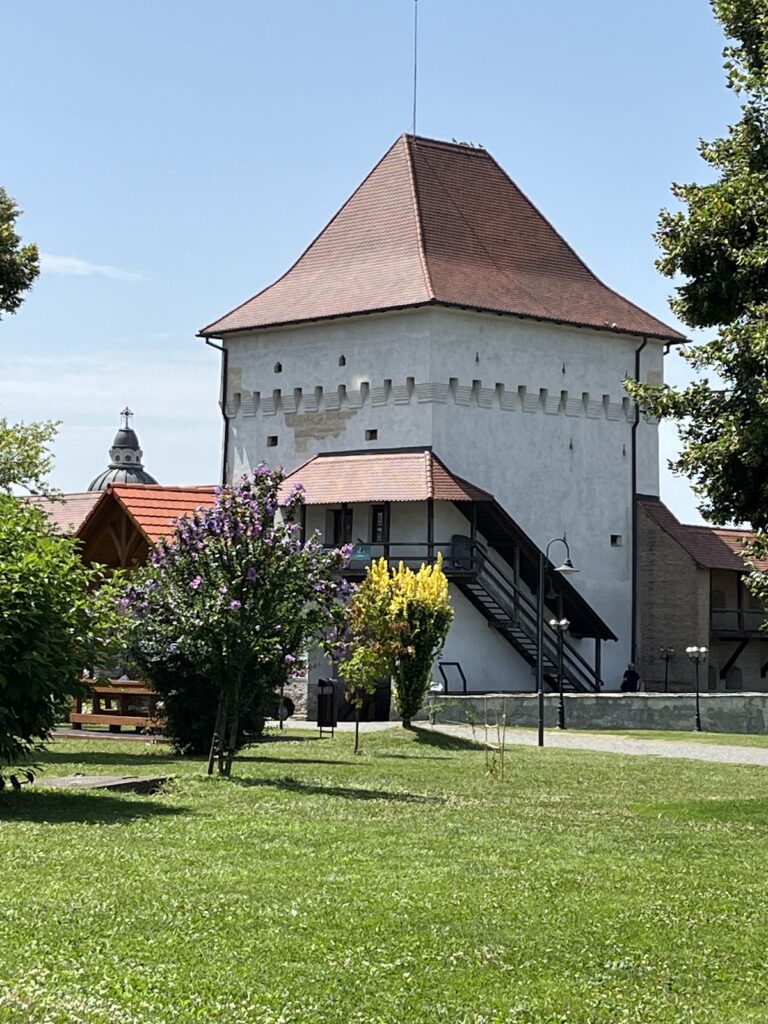Bethlen Castle: A Historic Noble Residence in Criș, Romania
Visitor Information
Google Rating: 4.5
Popularity: Medium
Google Maps: View on Google Maps
Official Website: www.facebook.com
Country: Romania
Civilization: Unclassified
Remains: Military
History
Bethlen Castle is situated in the village of Criș, within present-day Romania. This fortified noble residence was built and developed by the Bethlen family, a significant noble lineage in the region.
The castle’s origins date back to the mid-15th century when Márk, son of Miklós Bethlen, began constructing the foundational elements. Initial fortifications reflect a medieval military style characteristic of that era. In 1559, substantial expansions were carried out by George Bethlen along with his wife Klára Nagykárolyi, who contributed to both the castle’s defenses and residential quarters. Their son, Mihály Bethlen, continued these improvements in 1598, reinforcing the structure further during a time when Renaissance influences were spreading throughout Transylvania.
In the late 17th century, Elek Bethlen undertook significant fortification enhancements in 1675 by improving bastions and wall defenses. Elek also established a printing press within the castle’s confines, an important cultural development, and authored the first comprehensive history of the Bethlen family. Another family member, Farkas Bethlen, produced a detailed history of Transylvania itself while residing in the castle.
The estate remained under the ownership of the Bethlen family well into the early 20th century and was continuously inhabited until sometime between the First and Second World Wars. Following the political changes after World War II, the castle was nationalized in 1948, leading to the dispersal of its furnishings and gradual deterioration of the structure. Although there were attempts to restore the castle afterward, these efforts were abandoned, resulting in the loss of some of its architectural details.
In 2007, the Transylvanian branch of the Bethlen family regained possession of the site, sparking renewed conservation activities. Starting from 2008, archaeological excavations, museum installations, and structural repairs such as roof restoration and electrical work were undertaken to stabilize and protect the castle. The surrounding park was also enclosed during this period to safeguard the grounds. Since 2014, the Saint Francis Foundation from Dej has leased the property to manage ongoing preservation and use.
Remains
Bethlen Castle is arranged around a square courtyard and enclosed by fortified walls that reflect late medieval military architecture, predating Renaissance interventions. The fortifications include circular bastions positioned at each corner of the enclosure, designed for defense, with only two of these bastions still standing today. Access to the castle is marked by a square-shaped entrance tower, which served as a controlled gateway.
One of the castle’s most distinctive architectural elements is the “Archers’ Tower,” a prominently tall, round tower rising three stories high. This tower originally featured carved bas-relief figures set as guardians and embrasures, which are openings in the walls used for defense by archers or firearms. The upper floor of the tower was reached via a balustraded staircase, a detail reflecting older methods of fortification. Although some decorative features have been lost over time, evidence of these protective elements remains visible.
The residential section contains an arcaded wing considered the most aesthetically refined part of the castle. This wing includes semicircular arches supported by short, cylindrical columns, which create an elegant open corridor known as a loggia. The richly carved window frames and the arched balustraded porch recall similar Renaissance designs found elsewhere in Transylvania, such as the Perényi loggia in Sárospatak. The former castle chapel preserves medieval Gothic details, contrasting with the later Renaissance styles present in other parts of the structure.
Throughout the castle, decorative elements such as original coats of arms belonging to the Bethlen family, bas-reliefs, and inscribed stone tablets convey the noble lineage and heritage associated with the site. Although periods of neglect led to the removal or loss of some window frames, tiled stoves, and stone carvings, many architectural features remain intact or have been stabilized through recent conservation efforts.
Since 2012, archaeological research has been conducted in partnership with the Mureș County Museum, uncovering and documenting aspects of the castle’s construction and history. As part of this ongoing work, visitor pathways and exhibition spaces have been established within the grounds, enabling a better understanding of the castle’s historical layers and significance.







